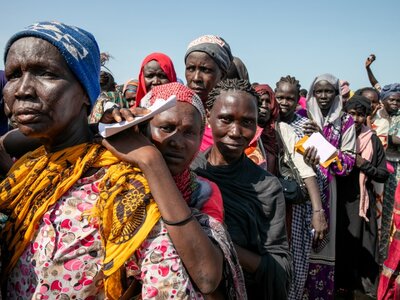Emergency
South Sudan
- 7.56 million
- people facing Crisis or worse levels of hunger
- 2.1 million-plus
- children under 5 are acutely malnourished
- US$321 million
- needed for WFP operations to April 2026
Conflict, climate shocks, economic instability and the ongoing war in neighbouring Sudan are driving a severe hunger crisis in South Sudan.
Over half of the population – 7.56 million people – will face crisis or worse levels of hunger during the 2026 lean season (April to July), according to the latest Integrated Food Security Phase Classification (IPC) report. Among the most vulnerable are over 2.1 million children aged under 5, and approximately 1.1 million pregnant and breastfeeding women – all acutely malnourished.
Of greatest concern are 28,000 people living in Luakpiny/Nasir and Fangak counties, who face Catastrophe (IPC Phase 5) levels of hunger. The southern parts of Luakpiny/Nasir County are at risk of famine.
Over 1 million people have fled to South Sudan since Sudan's war began, only to find more hunger on arrival as severe economic deterioration, extreme weather and conflict take a heavy toll.
Humanitarian access remains obstructed in several counties. The World Food Programme is also facing significant funding constraints. Although WFP aims to prioritize aid for 4.3 million people, it currently reaches only 2.7 million – and this is with reduced rations.
A critical funding shortfall of US$321 million to April 2026 threatens our capacity to prevent further deterioration of this crisis.
Urgent and sustained support is essential to save lives, protect livelihoods, and prevent the situation from deteriorating into a deeper humanitarian crisis.
What the World Food Programme is doing to respond to the South Sudan emergency
-
Food assistance
-
Funding shortfalls mean WFP can reach just 2.7 million people across the country with emergency food assistance instead of 4.3 million prioritized for support among critical levels of hunger.
-
Climate resilience
-
Cash transfers
-
School meals
-
Nutrition



